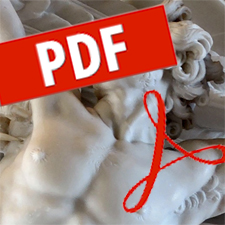Description
By Niels Lynøe
There is a murder story, from 400 BC, about the deaths of two members of the Pythagorean society. The circumstances are unclear, but it is assumed that they were actually killed. Why? They had betrayed the basic ideas of the Pythagorean worldview (Farrington, 1949). According to this scientific world order,everything that matters could or should be described and transformed into mathematical numbers and symbols. A point was referred to as 1, a line as 2, an area as 3 and a body as 4. The sum of 1+2+3+4 is 10 and ten was considered a holy number. The circle was thought to be perfect and hence divine (Witt-Hansen, 1961). Pythagorean mathematics was also thought to be perfect and divine, and accordingly definitive. However, the Pythagorean numerology didnot include what we currently refer to as‘irrational’ numbers, such as the square root of 2. These numbers were actually given a name by the Pythagoreans, who regarded them as beyond all reason and thus irrational. Members of the Pythagorean scientific society were not supposed to discuss this issue. The ‘crime’ committed by the two members of the societywho died mysteriously was discussing the irrational numbers and talkingabout themwith people outside the society (Farrington, 1949). They had been consideringthat in a rectilinear triangle the hypotenuse cannot be expressed in integers if the other sides are expressed in integers(Johansson and Lynøe, 2008). They had been dealing with a scientific anomaly(see Figure 1).
The story may not be true, but it does represent the most extreme means of silencing and punishing people who question basic assumptions within a scientific society. Currently, members of a scientific society who discover inconsistencies or observe scientific anomalies are shunned and marginalized. They might encounter problems in renewing their positions, in receiving financial support or in having their papers accepted for publication in scientific journals. After reading Waney Squier’s proposition paper, a via dolorosa through scientific purgatory, the Pythagorean mystery murder story springs to mind. Even though Waney Squier did not receive a death sentence, what happened was close to a character assassination. Her opponents certainly thought they had silenced her. They definitely succeeded in sending a signal to all other concerned scientists – and potential expert witnesses: if they want to avoid being subject to a similar ordeal, they should abstain from giving testimony which does not support mainstream ideas.
page: 111 – 128
Prometheus: Critical Studies in Innovation Volume 35, Issue 5
SKU: 350504
